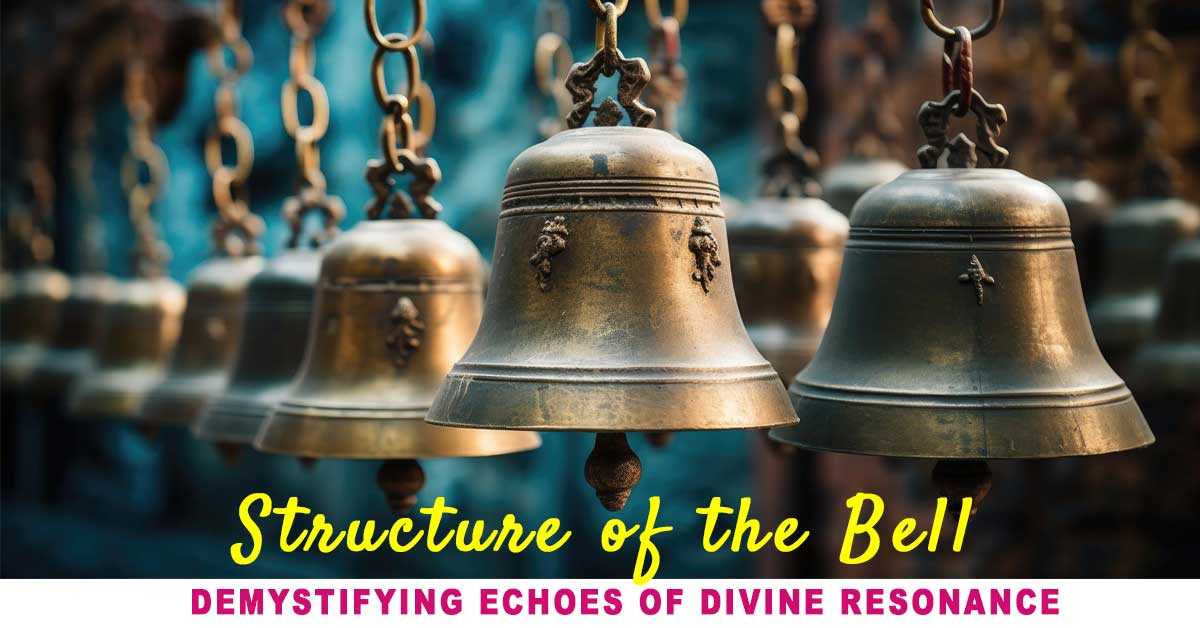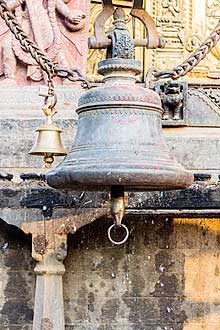In the captivating realm of bell sounds, have you taken time to explore secrets of melodious echoes? From the majestic tones of temple bells to the delicate tinkling of wind chimes. Bell music instruments captivate our senses and evoke deep emotions. But have you ever wondered what are the parts of a bell called?
This journey explores the very heart of bells. Dissecting the anatomy of a bell and unravelling the interplay of form and function. Are you ready to explore and appreciate the rich bell meaning. Beyond the familiar, we delve into the intricate components of powerful sounds. With the in-depth exploration, we unveil the profound bell definition and cultural significance. The timeless bell music instruments hold deep symbolic and cultural meanings waiting to be discovered
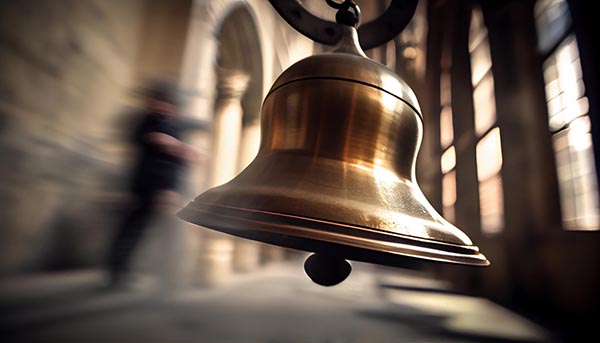
The resonant sound of the “ghanta”, in Hindu rituals, invites devotees into a realm of divine contemplation. We discover a hidden language of bell ringing sound waiting to decipher the secrets. Join us in demystifying the bell ringing meaning. Appreciating the divine resonance that reverberates timelessly.
Captivate yourself to the mesmerizing world concealed within the structure of bells. In the article, we unravel the symbolism that make them truly extraordinary. Prepare to discover the hidden language of bells, ready to surprise you.
Also Read:
- Top Agritech Startups Fueling Agriculture Growth in India
- Ram Mandir Ayodhya: Consecration Ceremony, A New Dawn for India
- The Top Social Media Trends You Need to Know for 2024
Bells: A Resonance Through Time
What is a bell? A musical instrument characterized by its melodic and percussive nature. When struck the solid and resonant structure induces vibrations. Resulting in the production of a pleasing bell ringing sound.
Bells, more than musical instruments, are sonic storytellers echoing through history. Crafted from metal (often bronze) or even glass. These melodic percussion instruments originated around 3000 BCE. Ancient China used metallurgy during the Bronze Age. Early bells, cast from molten metal or hammered into shape. Held simple clappers to produce their signature ring. The Zhou Dynasty (1046-256 BCE) saw advancements in Chinese bell-making, and with time. This knowledge spread to India and Mesopotamia, enriching cultures with their resonant melodies.
Decoding the Anatomy: Parts of a Bell
Traditional bells, with their resonant chimes echoing through time, hold a captivating allure. But beneath their seemingly simple form lies a symphony of meticulously crafted components. Let’s add some depth to the exploration of anatomy of a bell. The essential parts that orchestrate their captivating melodies of the timeless instruments.
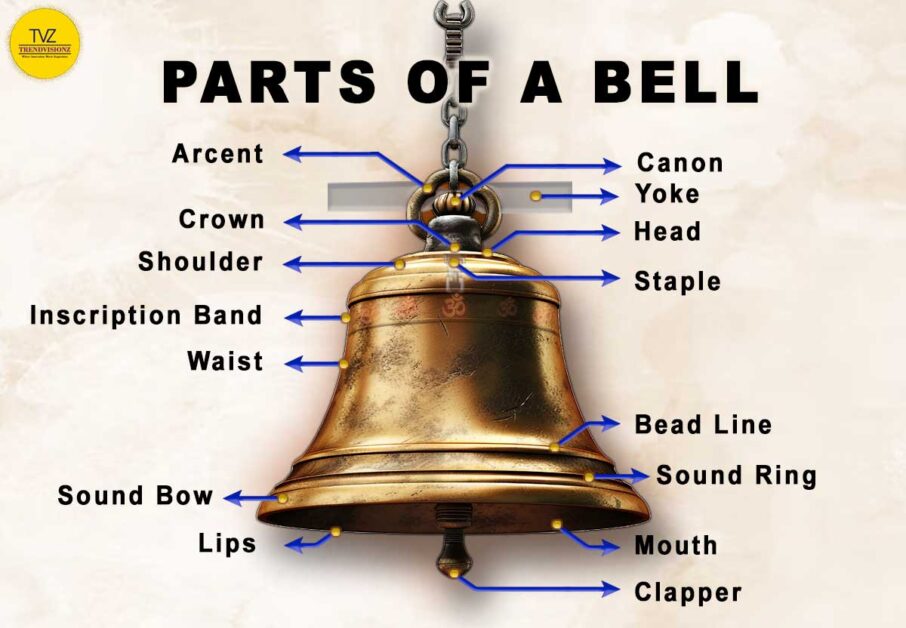
1. Yoke: Sturdily holds and allows swinging
Anchoring and providing a secure grip for suspension, the yoke plays a vital role in its functionality. Often crafted from sturdy wood or iron, it symbolizes the bell’s connection to its surroundings, echoing its message far and wide.
2. Crown: Regal Resonance and Sound Projection
Crowned at the very top, it sets the stage for the sound’s journey. Its shape, influenced by cultural variations, dictates the initial sound wave’s direction. Often adorned with intricate engravings, it symbolizes spiritual connection and celestial aspirations.
3. Head: Sculpted Serenity, Source of Sound
Gracefully positioned, the bell’s head serves as the genesis of resonance. Its contours are shaped by tradition and channel vibrations. An emblem of artistic expression, it breathes life into the melody.
4. Shoulder: Connects waist to Top
Supporting the crown with a gentle slope, the shoulders play a crucial role in sound quality. Their curvature and thickness influence the bell’s pitch and resonance, contributing to its distinctive character.
5. Waist: Defines and Shapes the Bell’s Resonance
Marking the transition between the broad shoulders and the expanding body, the waist plays a critical role in sound production. Its precise shaping ensures clear, uninterrupted vibrations, allowing the sound to bloom freely.
6. Sound Ring: Circles of Resonance, Auditory Embrace
Encircling the structure, the sound ring cradles vibrations, defining the lingering notes. Symbolizing unity and continuity, it transforms the ephemeral into a timeless embrace of resonant echoes.
7. Lip: Expressive: Expressively defines the Bell’s outer
Forming the bell’s mouth, the lip acts as the final point of sonic departure. Its thickness and curvature directly impact the sound’s clarity and power. In many cultures, it symbolizes the voice abd expressing its unique message.
8. Mouth: Harmonic Gateway, Sound Unleashed
At the bell’s mouth, melodies come to life. Shaped by expert hands, it is the vessel for sonic expression. A convergence of form and function, releasing waves of auditory artistry.
9. Clapper: Strikes for dynamic resonance
The heart of the Chime, the clapper, hangs suspended, ready to dance with each swing. Its material and weight influence the sound’s intensity and timbre, adding depth and complexity to the melody.
10. Bead Line: Echoes of Elegance, Linear Symphony
The bead line, a refined detail, guides the eye and resonates with the bell’s harmony. A subtle dance of form, its presence weaves aesthetics and purpose into the symphony.
11. Sound Bow: The inner surface amplifies sound
Plays a crucial role in amplifying sound. Its carefully designed curvature contributes to the resonance and tonal quality, enhancing the overall auditory experience when the bell rings.
12. Staple: Attaches clapper to yoke
A vital component that attaches the clapper to the yoke. This small but essential piece ensures the rhythmic movement of the clapper, facilitating the striking action that produces the resonant tones characteristic of its music.
13. Inscription Band: Personalized Messages on Metal
It serves as a canvas for personalized messages, symbols, or dedications. Whether conveying historical significance or personal sentiments, this component adds a layer of meaning to the bell’s presence and resonant voice.
14. Canons: Harmonic Nodes in Design
Canons, protrusions on a bell’s surface, influence its resonance. Serving as harmonic nodes, they contribute to the nuanced tonal quality, creating a symphony within the metal form
15. Arcent: The Elegance in Design
An architectural embellishment enhances the aesthetic appeal of bells. Adorning the crown or shoulder brings elegance to design, harmonizing form, and function while contributing to the overall visual allure of these resonant instruments.
Each bell, a canvas for craftsmanship’s delight, Its shoulder adorned, bathed in golden light. A bridge between earthly beauty and celestial song, Arcent—where artistry and music belong
Moving forward with our exploration into the intricate world of traditional bells. It becomes clear that these remarkable instruments are not mere instruments of music. They are storytellers, guardians of time, and echoes of the divine. Let’s now reflect on how understanding their anatomy unlocks a deeper appreciation for their craftsmanship, symbolism, and enduring significance in our cultural tapestry. What Do Bells Symbolize Spiritually? Unveiling the Divine Resonance

Bells symbolize positivity, freedom, and divine connection. Their melodic tones, both in waking life and dreams, mark significant moments and offer soothing harmony to the soul.
The Crown of the Bell: A Song Soars From Metal Majesty
Crowned like a king, poised at the summit, lies the bell’s most crucial element: its crown. This architectural marvel isn’t mere aesthetics. It’s the maestro, directing the vibrant melody outwards, transforming resonant hums into the evocative big bell chimes that have echoed through cultures for millennia.
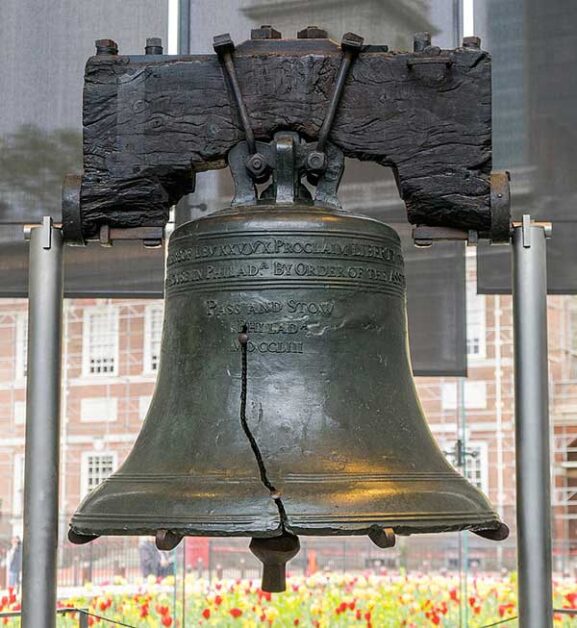
Unlike a monarch’s rigid crown, a big bell crown flares gracefully, like a blossoming flower opening to the world.
- Ōgane at Chion-in (Japan}: Standing at 3.3 meters tall and 2.7 meters in diameter. This big bell, weighing seventy tons, was cast in 1636 at Chion-in
- The Liberty Bell, Philadelphia (United States): Wears a more straightforward, classic flared crown, symbolizing its call for freedom that resonated across a developing nation.
- Shwedagon Pagoda (Myanmar): The ornate a masterpiece of Burmese craftsmanship, showcases a regal crown. A resonant connection with revered.
- Cheonheungsa Temple (Korea): The copper alloy bell is one of the largest and most splendid bells of the Goryeo era (10–14th century AD). A masterpiece of exceptional creative design and advanced manufacturing techniques.
- Tsar (Moscow): The largest in the world at Kremlin, weighs 200 tons. The Tsar Bell is a testament to the skill and ambition of Russian founders.
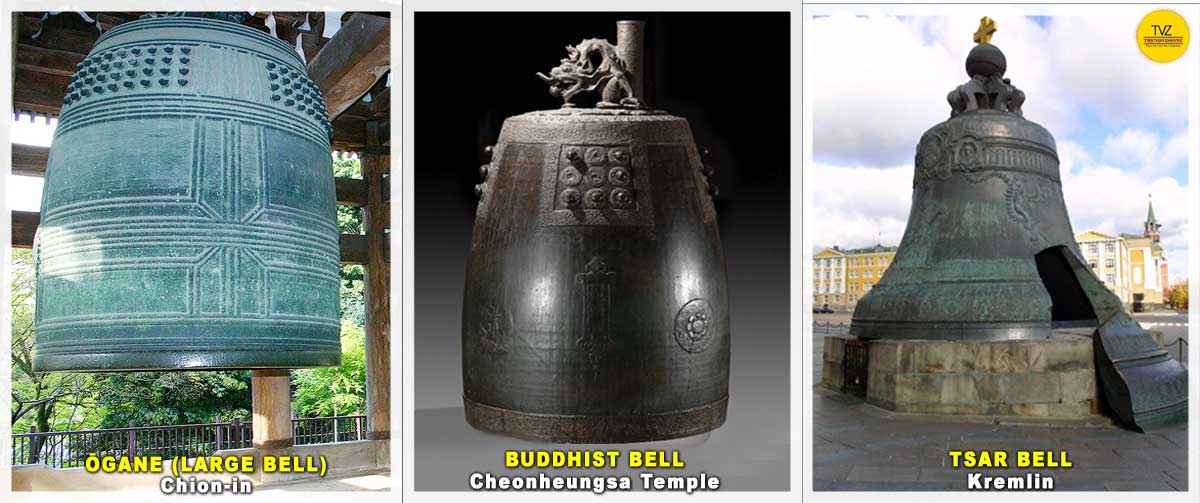
But the crown’s beauty lies not only in its form but also in its delicate balance. Too narrow, and the sound gets trapped, stifled within the metallic womb. Too wide, and the tone loses focus, diffusing into an indistinct murmur. This precision is where the craftsmanship of the bellmaker shines.
Crowning Majesty: The Spiritual Essence of Bells
Within the crown’s embrace swings the clapper, the rhythmic heart. Like a skilled orator, its suspension determines the “voice.” A rigidly mounted clapper delivers a sharp, almost metallic ring, while a loosely suspended one produces a warm, lingering chime that lingers in the air.
Imagine the ancient Pagoda bell, its multi-tiered crown sheltering a clapper that whispers prayers on the wind.

As the chimes rise, carried by the crown’s grace, they become an invitation, a call to awaken. Our exploration now extends beyond this architectural pinnacle. Moving forward, let’s unravel the symbolic language embedded in the diverse shapes and sizes of bells. Discovering how parts of a bell contributes to a harmonious tapestry of meaning and cultural significance
Echoes of the Divine: The Symbolic Language of Shapes and Size
The anatomy of a bell carry profound symbolic meaning across cultures. From the booming resonance of Big Ben to the delicate tinkling of wind chimes. The shapes and size whisper stories far beyond their audible tunes.
Giants of the Belfry
Towering big bells resonate with power and divinity. Consider the Great Bell of Mingun in Myanmar; its colossal presence signifies the strength of an empire. Its deep, rumbling sounds were believed to ward off evil and connect worshippers to the heavens. Similarly, the Tsar Bell in Kremlin, Russia, though never rung, remains a symbol of imperibellbbbellal might and divine connection.
Miniature Melodies
Smaller bells, in contrast, exude intimacy and charm. Japanese Rin bells, used in tea ceremonies, represent mindfulness and healing with their high, clear chimes. Miniature guardian bells found in Asian cultures symbolize personal protection and ward off negative energies. Their bright notes are said to call upon benevolent spirits or deities.
Beyond size, each part of a bell carries religious symbolism. The dome-shaped body evokes the heavens, while the rim connects it to the earthly realm. The clapper striking the interior resonates with the concept of bell symbolism descending into our world, sparking enlightenment.
But it’s the circle itself that genuinely stands out. From the Celtic Ogham symbol to the Buddhist Dharma wheel, circles represent wholeness, infinity, and the cyclical nature of life. This perfect, unbroken shapes has endured for centuries as a powerful metaphor for unity, harmony, and spiritual awakening.
From Molten Magic to Resonant Melody: The Art of Bell Casting
Shaping the Sound: Crafting the Mold
At the heart lies the intricate process of casting. It all starts with the mold, meticulously crafted from clay and molded into the desired shape. This delicate form undergoes a fiery baptism, hardened through heating to withstand the molten metal that awaits.
Bellfounding Process: Transforming Metal into Melody
Molten metal, often bronze, flows into a mold with an outer cope and inner core, a technique known as bell founding. The majority have a loam face, while handbell molds use sand. The liquid metal, heated to 1,100°C (2,000°F), enters through the top hole, releasing gases to prevent porosity. Controlled cooling avoids stress, taking a week or two for large bells. After mold removal, the rough casting undergoes polishing and sandblasting. But its journey isn’t over yet.
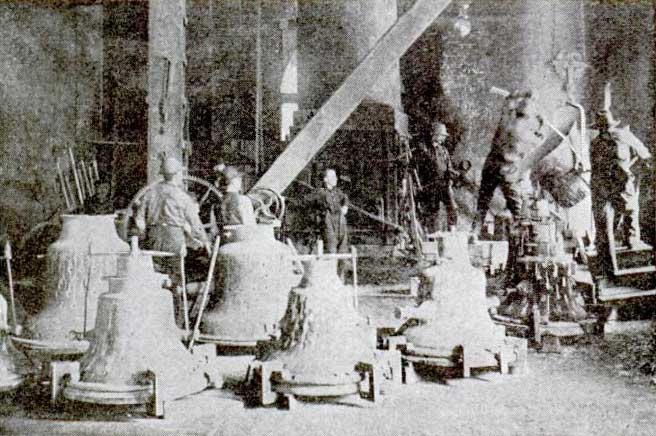
Fine-Tuning the Song: The Art of Tuning
The final act involves coaxing the perfect pitch from the rough-hew form. Through meticulous adjustments to the bell’s shape, the tuner refines its voice, coaxing forth a pure and resonant tone that carries through the ages.
As we transition to the next section, we find that the enduring symbolism sets the stage for a more profound journey within the bell’s form.
The Bell as a Microcosm: A Universe in Miniature
A seemingly simple object, holds a universe within. Understanding the significance of parts of a bell. Its majestic crown mirrors the celestial dome, while its earthly waist reflects our world. The rhythmic dance of the clapper against the bronze shell echoes the cosmic dance of the planets, a celestial symphony playing out within its form.

This microcosm, forged in metal, resonates with profound meaning. The anatomoy of a bell structure symbolizes the perfect order of the universe. A harmonious melody we strive to emulate. Each Chime becomes a call to awaken, a reminder of our place within the grand tapestry of existence.
As we delve into the intricacies of the parts of a bell. A realm forged in metal, we uncover a profound symbolism. These resonant chimes, become a beckoning call. Urging us to recognize our place within the vast tapestry of existence.
Embarking on the journey further, let’s transition to the realm of craftsmanship and innovation. The evolution of this timeless art form unfolds before us.
From Ancient Fires to Digital Harmony: Bell Manufacturing
For centuries, bellmakers toiled over fiery furnaces, using time-honored techniques to coax songs from molten metal. Each parts of a bell is crafted with precision. From the intricately patterned bells of ancient China to the majestic towers of European cathedrals.
Innovations in Modern Making
The bell music instruments pulsed with cultural significance and spiritual resonance. But time, as it always does, marches on, bringing with it the winds of innovation.
The once arduous process of casting has embraced modern advancements. Precision casting, guided by 3D printed molds, sculpts intricate designs. Digital tuning systems are akin to digital orchestra conductors. Guiding its form to achieve perfect harmonic overtones.
Artisanal Mastery: Human Craftsmanship in Bell Making
Yet, amidst the whirring of technology, the heart of casting remains human. Skilled bell craftsmanship with generations of knowledge oversee the process. They ensure each part of a bell has the the echo of its ancient ancestors.
This harmonious blend of tradition and innovation extends beyond mere mechanics. Modern materials like silicon bronze offer more prosperous, more complex tones, while contemporary founders push creative boundaries with unusual shapes and sizes. From delicate handbells to colossal chimes, the spirit of innovation keeps this ancient craft vibrant and relevant in our evolving world.
Technology may enhance efficiency, but the true magic lies in the human touch. The song, then, is a timeless melody. Echoing not just from the anatomy of a bell but from the depths of human innovation and creativity.
Now, let’s go in-depth into the cultural significance of engravings that echo stories of faith, history, and human creativity.
The Whispering Script: The Cultural Significance of Engravings
Beyond mere adornment, the engravings on bells whisper tales of culture and faith. The bell definition and meaning carries cultural relevance, representing symbolic and ritualistic significance. Thus engravings on parts of a bell often invoke spiritual figures or spiritual symbols, channelling celestial energy and blessings.
Hindu: Temple Bell
Ghanta or the Mandir Bells or Puja Bells echo with blessings and prosperity. Within Hinduism, the temple bell sound symbolizes the spiritual dwelling of sacred deities.
The bell’s physical form represents “Ananta,” signifying the infinite. Meanwhile, the tongue or clapper embodies “Saraswati,” which represents wisdom. Goddess Lakshmi, representing fortune, graces the surface. The sacred “Om-ॐ” is the universe’s origin. The bell symbolism serves as a reminder to devotees that knowledge is boundless, fostering a sense of humility.
Church Bell
The Church bell ringing meaning resonates with faith and hope. Christian bells initially emerged as square-shaped iron plates fused together, resembling cowbells in appearance.
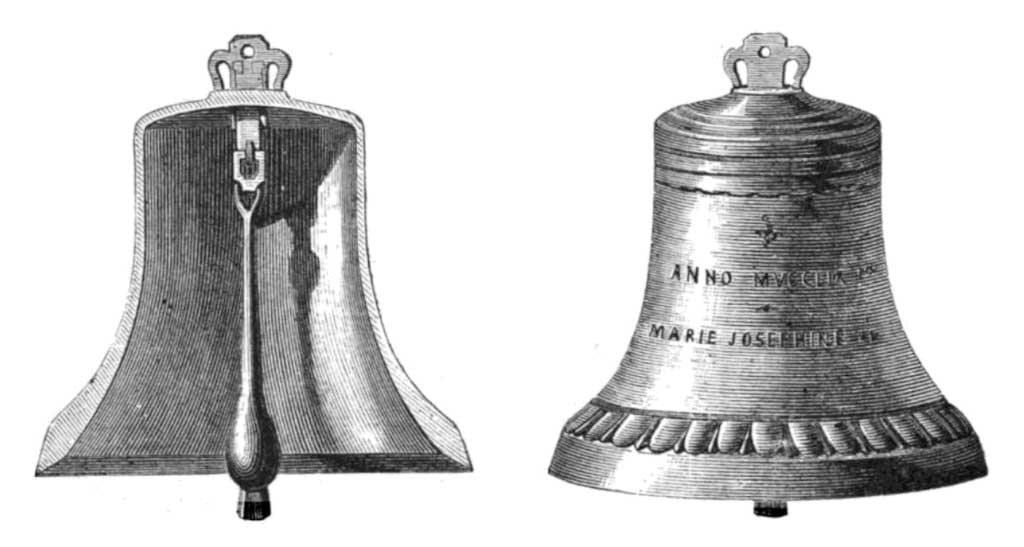
The cross, a symbol of sacrifice and redemption, adorns its form. The gentle dove embodies the Holy Spirit’s presence. Latin inscriptions whisper prayers and hymns. Each bell chime is a call to action, reminding followers of their covenant with God.
Buddhist Bell
Among the sacred tools employed in rituals, the Buddhist bell holds a place of profound reverence. In Buddhism, the vajra, symbolizing compassion, is paired, embodying knowledge—compassion and intelligence. The melodic resonance of a ringing bell sound whispers of spiritual growth.
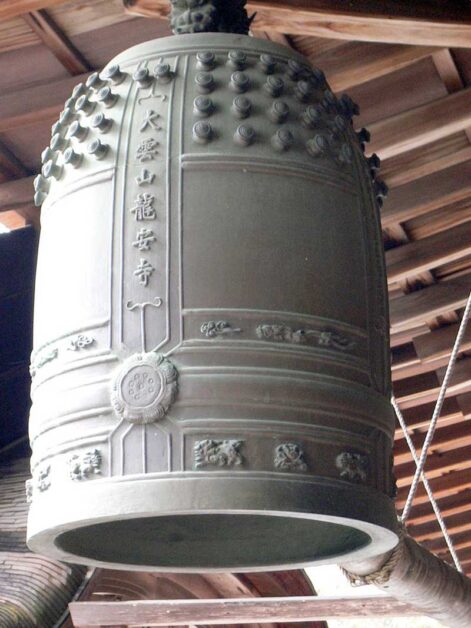
Buddhist bell engravings feature the lotus flower, symbolizing the journey to enlightenment. The Three Jewels – Buddha, Dharma, and Sangha – represent the core tenets of the faith. The practice of ringing the bell one hundred and eight times is a means of alleviating worries and finding a resolution to various problems.
Sikhism
Sikhs, guided by the belief in the immaterial nature of the divine and the oneness of God, refrain from using bells, candles, incense, or other ceremonial objects in their worship. Instead, the inscription “Ek Onkar” is a profound expression affirming the unity of God. Gurmukhi verses, etched with sacred hymns and the Khanda symbol, contribute to shaping the simplicity and purity of their worship rituals.
Bell in Zoroastrianism
In Zoroastrian practice, the bell holds deep significance during the Boi ritual performed five times daily before the Holy Fire. In Zoroastrian religion, with a bell ringing sound, the Adran (Priest) recites phrases- ‘Dushmata, Duzukht, Dusvarast’.

In Zoroastrianism, the bell ringing sound, nine or ten, as per occasion, symbolizes the banishment of evil from the world, cleansing words, deeds, and thoughts.
Even in secular contexts, bell engravings hold meaning. They may commemorate historical events or Latin phrases like “Vox Populi” (voice of the people) onto their metallic skin. These religious symbolism offer a glimpse into the cultural tapestry of their time.
Bells ringing sound are a window into the soul of a culture. Whispering stories of faith, and history. Each etch mark serves as a tiny voice, echoing across time.
Now, let’s shift our focus to unraveling the scientific symphony that underlies their captivating bell chime. A harmony woven from the elements of science and artistry.
The Science of Bells: Metallurgy and Acoustic Principles
Bells produce sound through basic scientific principles. Their metallic composition allows them to resonate when struck, emitting a musical tone. Beyond the captivating bell chime, there is a symphony of science and artistry.
The Metallurgy: Material Harmony
Bell metal, a delicate dance of copper tin alloy, acts as the instrument’s voice box. The 4:1 ratio is crucial – too much tin mutes the tone, while too little dampens its resonance. This delicate balance ensures the chime sings, not just clangs. The choice of bell metal or bell bronze as materials is crucial in craftsmanship.
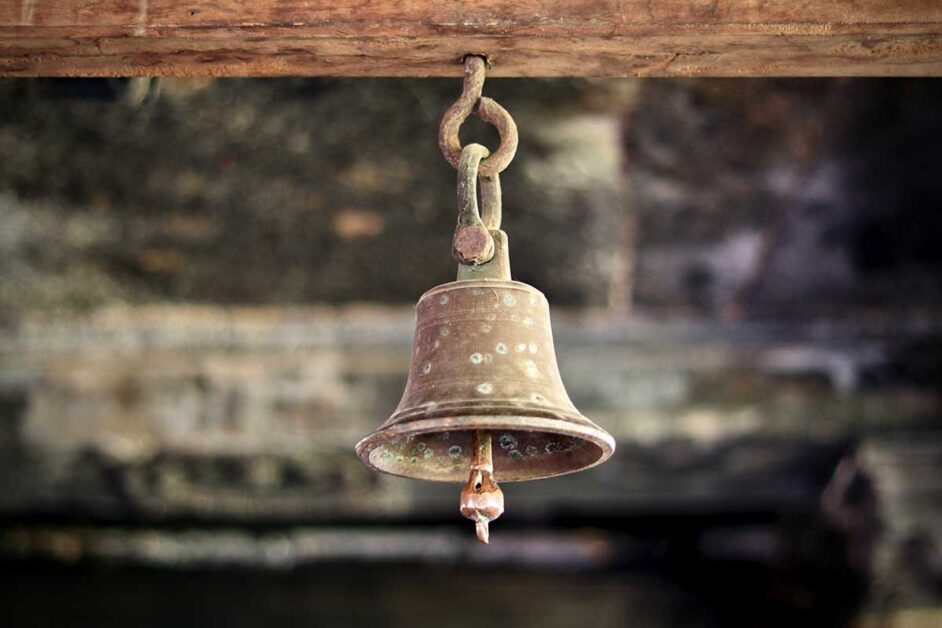
Bronze (Copper Tin Alloy): At its core, metallurgy involves the fusion of copper and tin to create bronze. Copper Tin Alloy essential for crafting bells and gongs. Referred to as bell metal, this amalgam, consisting of 78% Copper, 22% Tin in weight. Bells crafted from diverse materials: Brass (copper and zinc alloy) and solid Iron bells as variations. The choice of material depends on the desired sound and the purpose.
Form Meets Function
But the true magic lies in the interplay of form and function. The bell’s profile, from its majestic crown to its flared lip, isn’t mere aesthetics. It’s a carefully calculated curve, meticulously crafted to control the pitch and project the sound like a sonic lighthouse.
Resonance Symphony
When struck, the bell’s metal vibrates, sending ripples through the surrounding air. These waves translate into the music we hear. The crown acts like a megaphone, projecting the sound outwards. The carefully sculpted profile from crown to lip dictates the pitch, ensuring each bell sings its unique song.
The Conductor’s Baton
The clapper, the bell’s conductor, plays a crucial role. Its weight must be perfectly calibrated to strike the bell with the proper force.
Harmony in Bell Chime
These elements, meticulously woven together, create the magic of a bell’s voice. It’s not just a sound. It’s a testament to the harmonious interplay of form and function. Each bell chime resonates not only in the air but also in the mind. Reminding us of the delicate balance that creates beauty and harmony. Both in the world around us and within ourselves.
Now, we transition to the diverse world of bell music instruments. Sounds that contribute to the enchanting realm of musical expression.
Also Read:
- The Birth and Blessings of Khatu Shyam Ji: A Divine Protector
- Beyond Horoscope 2024: Zodiac for Health, Love, & Career Growth
Bell Music Instruments: The Musical Spectrum
Bells come in all shapes, sizes, and sounds. Their variety allows them to serve many purposes, from marking time to bell music instruments.
A Chime of Colours: Types of Bell Music Instruments
There are varied types of Bell music instruments. Each with its unique design and sound characteristics. The ancient Chinese pioneered sequences for music, known as chimes or bianzhong. Let’s explore the diverse world of bell instrument that contribute to the enchanting realm of music:
Handbells
These petite maestros are nestled in gloved hands. These bells chime out enchanting melodies. Their delicate tinkles fill churches and concert halls alike.

Tubular Bells Chime
Imagine towering chimes singing from the heavens. Suspended tubes of varying lengths, struck with mallets, produce a rich, resonant sound that adds depth and drama.
Carillons
Guardians of time and melody; carillons stand tall in towers. Played by keyboard or intricate mechanisms, their numerous bells paint sonic landscapes.
Cowbells
Echoes of rolling hills and pastoral scenes, cowbells chime with a bright, metallic tang.
Singing Bowls
Encircled in serenity, singing bowls hum with calming vibrations. They emit resonant tones used as meditation bell. Used in healing, and spiritual practices.
Jingle Bells
Infectious cheer in every jingle! These festive companions add a playful touch to folk music and holiday carols.
Sleigh Bells
Jingle all the way! Cascading melodies from multiple bells on a strap conjure up images of joyful sleigh rides
Door Bell Chime
A gentle serenade welcoming guests. Door bell chimes announce arrival with unique charm.
Zills (Finger Cymbals)
A dance of vibrant rhythm, zills, worn on fingers, add sparkling accents to traditional and folk music.
Electronic Bells
These digital bells chime offer versatile palettes of tones. They push the boundaries of synthesizers and samplers.
Types of Bell Music Instruments offer a spectrum of musical possibilities. Composers tap into this sonic palette. So, the next time you hear a bell, listen closely. It’s not just a sound; it’s a story waiting to be told. A musical journey painted in resonant metal.
We now delve into the overlooked yet significant world of bells. The unsung heroes contribute to the broader orchestration of auditory experiences.
The Symphony of Silence: The Unsung Heroes of Design
While the ringing tones of bells capture our attention, the true magic lies in the silent symphony of their design. Each curve, thickness, and angle whispers a story of meticulous planning and unseen forces.
1. The Song of Shape
Imagine a sculptor shaping sound. The bell’s profile, from its majestic dome to its graceful curve, is not just aesthetics; it’s a conductor, shaping the very pitch and resonance of its voice. A more expansive dome hums a deep, brooding melody while a slender profile sings a bright, joyful tune.
2. The Dance of Thickness
Beneath the bell’s polished surface lies a silent dialogue between form and function. Thicker walls, like seasoned musicians, dampen unwanted overtones, creating a pure, harmonious tone. Thinner sections, like agile dancers, vibrate freely, adding richness and complexity to the sound.

3. The Symphony of Strength
The clapper, a powerful conductor, unleashes forces that could shatter the bell. But unseen heroes stand guard. The bell’s shape and thickness, meticulously calculated, distribute these forces like a well-rehearsed orchestra, ensuring the bell resonates for generations.
These silent elements, woven into the very fabric of the bell, are the unsung heroes of its song. They remind us that true beauty lies not just in the audible but in the intricate dance of form, function, and the unseen forces that shape our world.
Bells: Religious Symbolism in Ritual and Worship
Across cultures, bell transcend mere sound, becoming powerful spiritual symbols woven into the fabric of religious ceremonies. Their structure, meticulously crafted, imbues them with unique meaning and purpose.
Buddhism
In Buddhist rituals, the bell’s dome-shaped crown symbolizes wisdom, and its curving lip represents compassion. The symbolism of each strike embodies the voice of ultimate truth. In Buddhism, the meditation bell serves as a powerful tool, signalling the beginning and end of meditation sessions.
In Vietnamese Buddhist culture, adding a specific amount of gold to the bronze during standard casting enhances the bell’s sound, increasing its reach. Despite the cost, many consider contributing gold to for casting, an honorable family gesture and a demonstration of devotion to Buddha.
I donated gold for bell casting today. I pray for happiness for my family
Vu Thi Minh, A gold donor, Hanoi
Hinduism
Hindu temples resonate with the deep, booming chimes of large bronze bells. The Hindu meditation bell, with its resonant tones akin to a temple bell, envelops the environment with a calming sound effect. Their immense size and alloy composition create a powerful sound believed to ward off evil spirits.

The intricate carvings on these bells, like those at the Meenakshi Temple, depict deities and auspicious symbols, further amplifying their sacred significance.
Christianity
For Christians, church bells with crosses and dove motifs mark transitions in worship, their clear, resonant tones calling believers to prayer.

Sikhism
In Sikhism, the “इक ओंकार” inscription on simple metal discs replaces the use of bells, reflecting their emphasis on the oneness of God.
Shinto
Shinto (literally “the way of the gods”). Japanese natives believe Shinto shrines utilize wind chimes with purifying properties. Explore the Japanese way of life.

Islam
Islamic educational institutions and mosque use bells, indicating prayer times and marking significant moments in their sacred traditions. Each element, from clapper design to inscriptions, contributes to the bell’s specific role in rituals and worship.
By understanding these diverse structures and their symbolic meanings, we gain a deeper appreciation for the rich tapestry of cultures where bells resonate as more than just instruments, but as powerful expressions of faith and spirituality.
The Enduring Chime: Bells in a Changing World
Though steeped in tradition, bells are not relics of the past. Innovation bell chime on the horizon, promising new forms and functions.
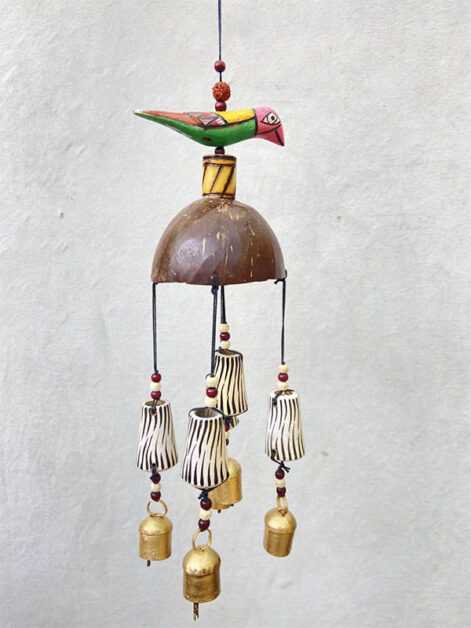
- Digitally-Controlled Harmony: Bells now boast digitally controlled mechanisms, offering precise tones and remote operation.
- Innovative Designs: 3D printing revolutionizes bell design, introducing intricate shapes and personalized aesthetics.
- Imagined Symphonies: Envisioning a future with wind-powered miniature bells scattered across landscapes. Think of a skyscraper’s facade transformed into a resonant instrument.
Despite technological advances, the core purpose of bell shapes endures. Connecting with mindfulness, echoing community, and linking to the divine.
- Tranquil Tones in Cities: Bicycle bells bring moments of tranquillity to bustling urban environments.
- Bell for Meditation: Explore mindfulness with the transformative ‘Bell of Mindfulness.’ Discover serenity through melodic tones. Embrace tranquility in each resonant chime of bell for meditation. Bell of Mindfulness: Your Ultimate Path to Stress-Free Living
- School Bells and Shared Experiences: School bells not only mark time but create shared experiences.

As technology evolves, the core purpose of bells – to connect, to signal, to inspire – remains unchanged. The future may bring new chimes, but the enduring song of the bell reminds us that some things, like the human spirit, resonate for eternity.
Also Read:
- Smart Vehicle Choices: The Ultimate Guide to Choosing EV vs Hybrid
- Brew a Better World: The Secrets of Timeless Traditions
- Benefits of Tea: Creating Tranquility in a Busy World
FAQ: Parts of a Bell
What defines a bell?
A bell, typically metallic but occasionally crafted from horn, wood, glass, or clay, resonates when struck by an internal clapper or external mallet near the rim. Classified as idiophones or percussion instruments, bells vary in shape from barrel-shaped, hemispherical, convex, to straight, often featuring ornate lotus-shaped rims in Chinese variations.
What is the history of bellfounding?
Bellfounding or casting of bell (molten metal) dates back to the Bronze Age. The pinnacle of Chinese bellfounding craftsmanship was during the Zhou dynasty (c. 1046–256 BC). The period marks a significant era in the evolution of bell-making techniques.
Conclusion
The Resonant Legacy is beyond a simple bell Chime. The tapestry of bell ringing meaning woven from diverse beliefs, values, and histories. We’ve delved into its very anatomy. Exploring the hidden meanings embedded in parts of a bell. Exploring the symbolic significance and bell definition across diverse cultures and religions. This exploration has unearthed how types of bell instrument serve as powerful symbols of harmony, communication, and even spiritual awakening across cultures.
The intricate bell shapes adorned with religious symbolism. Meditative hum of a Ghanta, each temple bell sound resonates with deeper meaning. The bell ringing sound is no longer just a notification but a call to reflection. Reminding us of the divine order that underpins our world.
Now, when you encounter a bell, be it a majestic temple bell or a tiny bell music instrument. Let the voice of meditation bell resonate within. Look closer, and you’ll see the intricate patterns of balance and beauty within its structure. This newfound understanding will forever transform how you see and hear these timeless instruments. Allowing you to appreciate their rich bell meaning. And the tapestry of human experience they represent.
Our Digital Imprints:
Anuj Mahajan is a Mass Communication Specialist,
ICF Certified Coach & Corporate Trainer. Motivational Speaker / NLP Lifecoach.
Chief Operating Officer: Nuteq Entertainment Pvt Ltd, and
Co-Founder: Trendvisionz – A Premier Digital Marketing Agency in India
Get Connected to us with our Newsletters-Transforming Lives… Creating the magic. Just – Believe ~ Practice ~ PerformBizTech Chronicle… Navigating Tomorrow’s Tech Frontiers 🚀
Join my LinkedIn Group: Digital Marketing, Content Creation World Group
Follow me on Twitter or LinkedIn. Check out my website.
